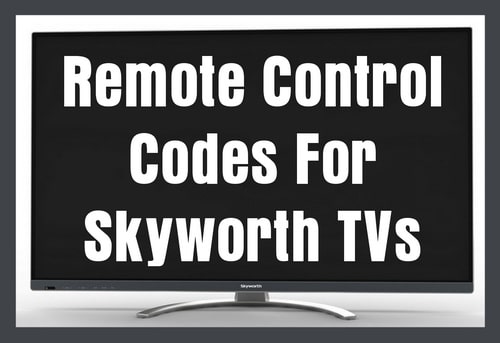2020. 3. 4. 01:04ㆍ카테고리 없음
Display Information about the main characteristics of the display - panel, backlight, resolution, refresh rate, etc. Size classSize class of the display as declared by the manufacturer.

Often this is the rounded value of the actual size of the diagonal in inches.31.5 in (inches)DiagonalApproximate diagonal size of the display. If the manufacturer does not provide such information, the diagonal is calculated from the width and height of the screen.801 mm (millimeters)80.1 cm (centimeters)31.5354 in (inches)2.628 ft (feet)WidthApproximate width of the display. If the manufacturer does not provide such information, the width is calculated from the diagonal and the aspect ratio.697.685 mm (millimeters)69.7685 cm (centimeters)27.4679 in (inches)2.289 ft (feet)HeightApproximate height of the display. If the manufacturer does not provide such information, the height is calculated from the diagonal and the aspect ratio.392.256 mm (millimeters)39.2256 cm (centimeters)15.4431 in (inches)1.2869 ft (feet)Panel typeThere are various panel technologies.

Each has its own specific features - viewing angles, color reproduction, response time, brightness/contrast, production cost, etc. The image quality depends directly on the type of the display panel used.IPSPanel bit depthThe most widely used panels are those with 6, 8, and 10 bits for each of the RGB components of the pixel. They provide 18-, 24-, and 30-bit color, respectively.8 bitsFRCFrame Rate Control (FRC) is a method, which allows the pixels to show more color tones. With quick cyclic switching between different color tones, an illusion for a new intermediate color tone is created.

For example, by using FRC, a 6-bit display panel is able to show 16.7 millioin colors, which are typical for 8-bit display panels, and not the standard 262200 colors, instead. There are different FRC algorithms.NoColorsThe maximum number of colors, which the display is able to reproduce, depends on the type of the panel in use and color enhancing technologies like FRC.16777216 colors24 bitsAspect ratioThe ratio between the horizontal and the vertical side of the display. Some of the standard and widely used aspect ratios are 4:3, 5:4, 16:9 and 16:10.1.778:116:9ResolutionInformation about the number of pixels on the horizontal and vertical side of the screen. A higher resolution allows the display of a more detailed and of higher quality image.1920 x 1080 pixelsFull HD / 1080pPixel pitchThe pixel pitch shows the distance from the centers of two neighboring pixels. In displays, which have a native resolution (the TFT ones, for example), the pixel pitch depends on the resolution and the size of the screen.0.364 mm (millimeters)0.0364 cm (centimeters)0.0143 in (inches)0.0012 ft (feet)Pixel densityInformation of the number of pixels in a unit of length. With the decrease of the display size and the increase of its resolution, the pixel density increases.70 ppi (pixels per inch)27 ppcm (pixels per centimeter)Display areaThe percentage of the approximate area, taken by the active part of the screen, to the total front area.85.79% (percent)BacklightThe backlight is the source of light of the LCD display panels.
The type of backlight determines the image quality and the color space of the display. There are various backlights such as CCFL, LED, WLED, RGB-LED, and etc.Direct LEDBrightnessInformation about the brightness of the screen. It is measured in candela per square metre (cd/m²).230 cd/m² (candela per square meter)Static contrastThe static contrast shows the ratio between the brightest and the darkest color, which the display can reproduce simultaneously, for example, within one and the same frame/scene.1200: 1Horizontal viewing angleInformation about the maximum horizontal viewing angle, within which the image on the screen is of acceptable quality.178 ° (degrees)Vertical viewing angleInformation about the maximum vertical viewing angle, within which the image on the screen is of acceptable quality.178 ° (degrees). Frame interpolation Many smart TV sets use a technology for interpolating (inserting) of intermediate frames between existing ones in order to achieve more fluent visualization, especially for dynamic scenes. Interpolation technologyFrame interpolation technologies differ according to the manufacturer and each has its own specific name.Image Quality RatioInterpolation valueThe frame interpolation value as provided by the manufacturer. This value must not be confused with the refresh rate of the screen.100Interpolation measurement unitSome manufacturers name commercially the measurement unit of their own interpolation technologies as to denote the degree of interpolation.
Very often the measurement unit is an abbreviation of the frame interpolation technology in use.IQR. Power supply and consumption Information about the power supply and consumption, energy efficiency class, etc. Dimensions, weight and color Information about the dimensions and the weight of the specific model with and without stand as well as the colors, in which it is offered to the market. Ergonomics Information about the ergonomic functions - height adjustment, swivel angles, tilt angles, etc.
VESA mountInformation about whether there is a possibility for wall mounting according to the VESA Mounting Interface Standard (MIS).YesVESA interfaceThere are many various interfaces under the VESA standard, which differ in the size of the brackets, the distances between the screw holes and their number.400 x 200 mmRemovable standInformation about whether the stand can be dismounted. Usually, this is required for wall mounting.YesHeight adjustmentInformation about whether the stand allows height adjustment.NoLandscape/portrait pivotSome displays have the ability to operate in landscape and portrait mode alike.NoLeft/right swivelInformation whether the display can be swiveled around the stand axis.NoForward/backward tiltMost displays have the ability to be tilted forward and backward as to provide a more comfortable viewing position for the user.No.
Video file formats Smart TV sets allow playing various video file formats. Video file formats/codecsInformation about some of the main video file formats/codecs supported by the current model.3GPP (3rd Generation Partnership Project,.3gp)AVI (Audio Video Interleaved,.avi)Flash Video (.flv,.f4v,.f4p,.f4a,.f4b)H.263H.264 / MPEG-4 Part 10 / AVC videoH.265 / MPEG-H Part 2 / HEVCMKV (Matroska Multimedia Container,.mkv.mk3d.mka.mks)QuickTime (.mov,.qt)MPEG-4TS (MPEG Transport Stream,.ts,.tsv,.tsa)VC-1VP9VOB (Video Object,.VOB)VRO (DVD-VR,.VRO)WebM. Display: 31.5 in, IPS, Direct LED, 1920 x 1080 pixelsViewing angles (H/V): 178 ° / 178 °Brightness: 230 cd/m²Static contrast: 1200: 1Refresh rate: 60 HzFrame interpolation: 100 IQR (Image Quality Ratio)TV tuner: Analog (NTSC/PAL/SECAM), DVB-T, DVB-T2, DVB-C, DVB-S2, DVB-SDimensions: 735 x 434 x 86 mmWeight: 4.3 kgThe information on this website is provided on 'as is, as available basis' without warranty of any kind. DisplaySpecifications is not responsible for any omissions, inaccuracies or other errors in the information it publishes. All warranties with respect to this information are disclaimed.
Skyworth Philippines
Reproduction of any part of this website in its entirety or partially or in any form or medium without prior written permission is prohibited. The trademarks, marques and logos of the manufacturers of devices, software, hardware, etc. Are the property of their respective owners.
1.We do not accept orders for set-top boxes bearing or using our 'SKYWORTH' trade mark or under the 'SKYWORTH' brand.2.We only accept orders for set-top boxes bearing trade marks or logos registered for the relevant market.3.We only accept orders for set-top boxes for those who have obtained licences for the technology to be installed.4.We are not related to 'Sky' or 'Sky International AG', owner of the trade marks of 'SKY', in any way.5.We do not offer or supply any products bearing, under and/or by reference to the 'SKYWORTH' brand or name.